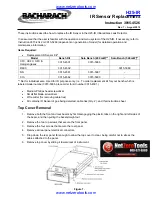
GOTO
41
Original Document
Copyright © 2017 Loma Systems
running at a high speed, there are many inspection tools enabled and if the
difference between the reject distance and pack length is small.
Maximum (ms) - The maximum time in milliseconds taken to process a
pack is displayed.
Average (ms) - The average time in milliseconds taken to process
each pack is displayed.
Timeout – If the time taken to process any product image exceeds 25%
of the values entered in these fields, the time will be coloured orange
as a caution. When it exceeds 50%, the time is coloured red and a
fault will occur as the system cannot reject the product. You should
reduce the speed of the conveyor and the number of inspection tools
enabled, and either decrease the pack length or increase the reject
distance. The following total timeout times are displayed:
Image (ms) - The total image timeout time for all packs in
milliseconds is displayed.
Reject (ms) - The total reject timeout time for all packs in
milliseconds is displayed.
Rates
The Rates sub-tab of the Totals tab provides totals data covering the rate at which packs are
being passed through the system, the reject rate and the reject percentage against the total
number of packs passed. This information is also displayed in a graphical format.
The Rates sub-tab provides the following:
Rates (area) - This area displays the following:
Product Rate (ppm) - The current number of packs being inspected per
minute is displayed. This is indicated on the graph by a
blue
line.
Reject Rate (ppm) - The current number of packs being rejected per minute is
displayed. This is indicated on the graph by a
red
line. If this value exceeds the
Excess Rejects (rpm) value set in the I/O (Rejects) tab of the Product Settings
screen then a fault will be generated.
Reject Ratio - The current percentage of packs being inspected that are
rejected is displayed.
Last Reject - The time that the last pack was rejected is displayed.
Rates - The graph displays time in 5 minute segments on the X axis and pack numbers
on the Y axis so that any trends can be easily identified. Tapping in the graph














































